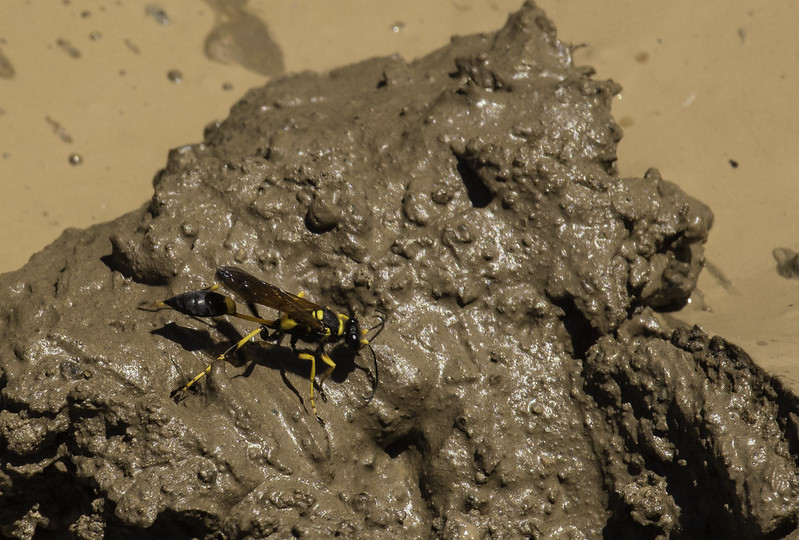
Explore the life cycle of ladybugs in today’s Take It Outside post!
Most people can recognize an adult ladybug. But do you know what a ladybug larva looks like? Or that ladybugs eat aphids, and are most helpful to gardeners during their larval stage?
Learn all about ladybugs and other beneficial insects in today’s post!
Upcoming Event:
Join PEEC staff member Ashleigh Lusher today at 11 AM for our new weekly Critter Chronicles series. Ashleigh will introduce our tiger salamanders, Tam and Titus, via YouTube livestream and answer questions that come in through the live chat! This program will last for about 15 minutes. Tune in here.
Blog Post:
Fifth graders Aislinn Marshall and Liv Niklasson investigate the life cycle of their favorite insect, the ladybug, today on the blog. Read their post here.
Activity:
Every gardener is happy to see ladybugs making a home in their garden. Ladybugs help control other insect pests, including aphids, that eat plants. Play this fun ladybugs and aphids game, inspired by Red Light, Green Light, and then go out to your yard to search for ladybugs!
Outdoor Challenge (Beginner):
Look for ladybugs! Ladybugs eat aphids, and aphids eat tender green plant growth. So look around your garden or favorite outdoor space for plants that have tiny green or black aphids on their leaves or buds. You might spot ladybugs nearby.
While you’re looking closely at plants, see if you can spot other insects! Here are some tips:
- Adult insects often have wings.
- Eggs are tiny and often hard to see, but look carefully at the backs of leaves for eggs. They come in many shapes and colors, and may be laid singly or in clumps.
- Larvae range in size from very small to quite large, they might look like a caterpillar or more like an adult, don’t have wings, and crawl around, eating lots of plant parts or other insects.
- Pupae, a stage between larvae and adults for some insects, often hang from the underside of plants or logs, or lie buried in the ground.
Outdoor Challenge (Advanced):

Create a habitat for beneficial insects in your yard or garden. Beneficial insects will eat and help control pests like aphids, hornworms, and squash bugs. Just like all other critters, beneficial insects need access to food, water, and shelter. Beneficial insects found in New Mexico include ladybugs, lacewings, soft-winged flower beetles, bees and wasps, and more!
Walk around your yard and see what you already provide for our insects and what you could add. Are there adjustments you can make for your yard to be more insect-friendly? Here are four things to think about:
- Food: Beneficial insects will prey on other bugs in your yard, but many also require nectar and pollen when insects are scarce. Buckwheat, dill, and garden cosmos are all good things to plant to attract beneficial insects.
- Water: Provide a shallow dish of clean water in your yard so insects can stop by for a drink. Put pebbles inside and fill the dish until they are partially covered. The pebbles will provide a landing spot for wasps and other visitors!
- Shelter: Beneficial insects will overwinter in the top layers of soil, in plant litter, or under the bark of trees. Leaving some dead plant matter on the ground in your yard can help provide a home for insects. Perennial clovers and native grasses can also help provide habitat for insects.
- Limit Insecticides: While insecticides can be effective in controlling garden pests, they are also harmful to the beneficial insects that we want to attract! Insecticides are also a temporary solution. Focus on improving your soil health, attracting beneficial insects to your yard, and planting native plants to create a more diverse and healthy ecosystem! This will naturally help control the pests in your yard.
Other Resources:
- Ladybugs and others are considered beneficial insects because they prey on crop-damaging pests. Check out this guide to beneficial insects of New Mexico from the New Mexico State University’s Extension office.
- If you’re a gardener, here’s a primer on entomology for gardeners from the University of Kentucky.
- If you’d like to take a much deeper look at attracting beneficial insects to your garden, check out this presentation given by Linda Wiener to the Taos Chapter of the Native Plant Society.
Share Your Experience:
What bugs can you find this week?! Tell us in the form below! We’d love to see your photos, too. Please send them to takeitoutside@peecnature.org or share them on Facebook or Instagram with the hashtag #peectakeitoutside.
Join us tomorrow to learn about pollinators and our penstemon gardens!
